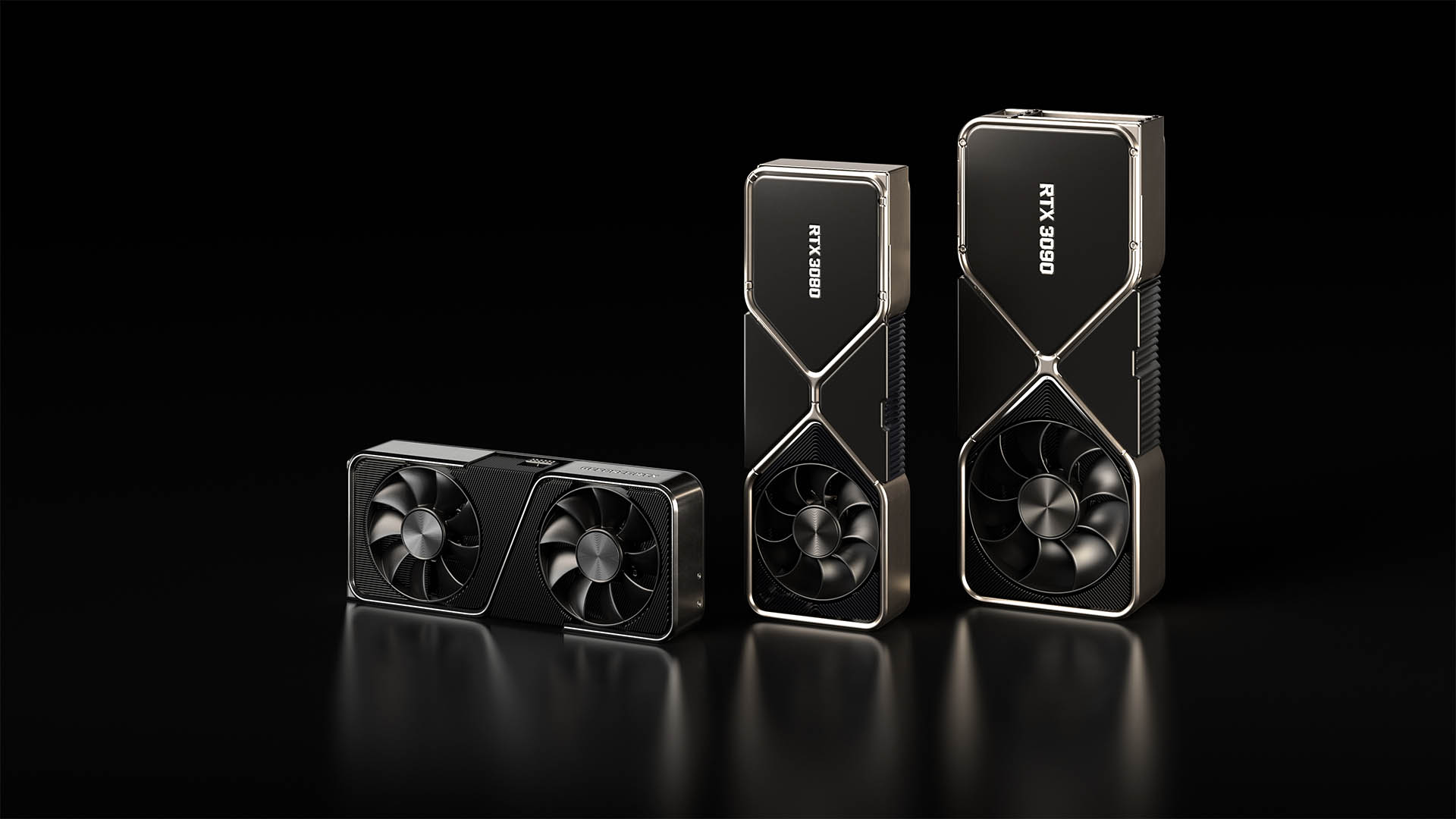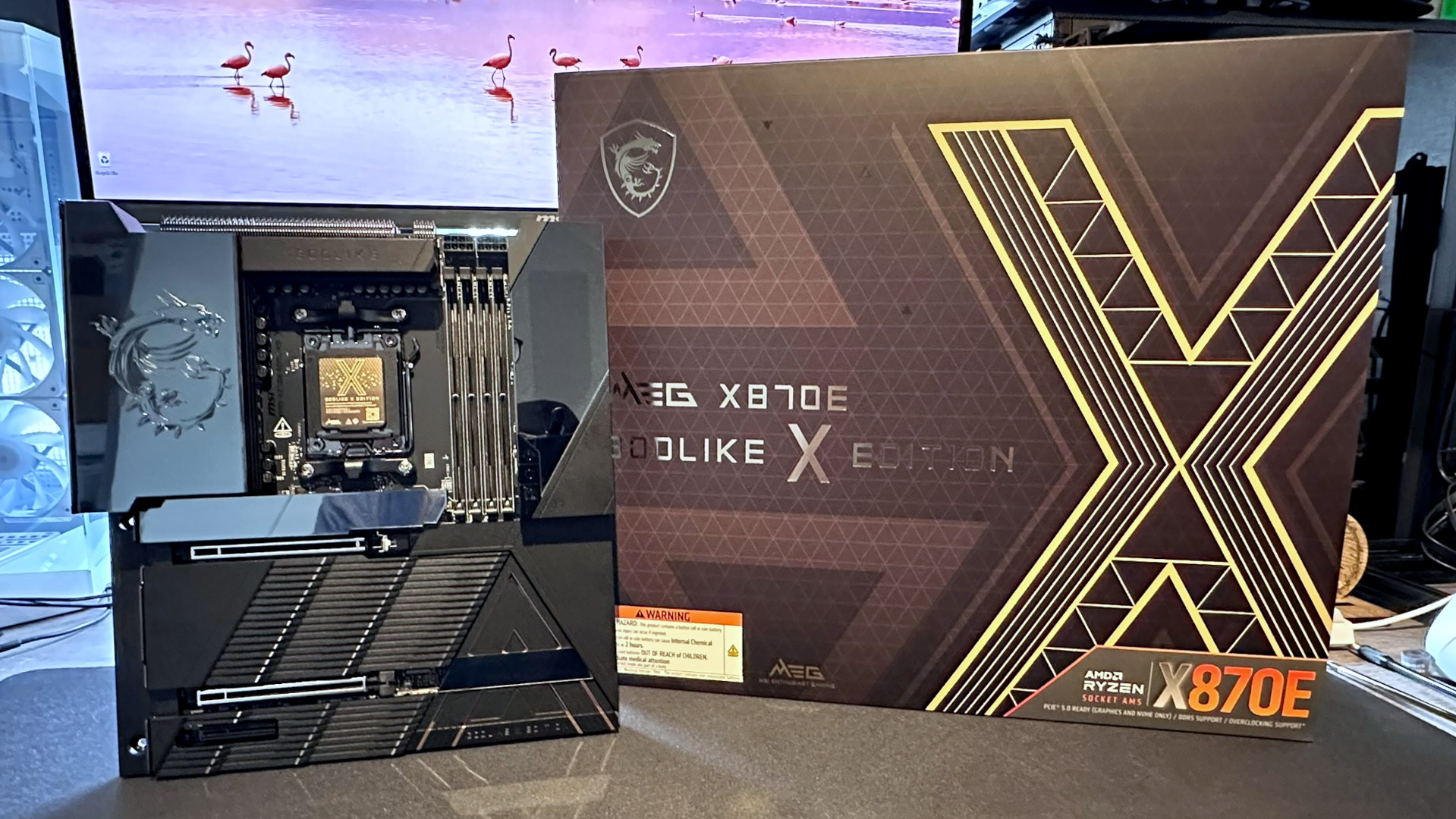Nvidia's monster RTX 30-series GPUs are listed with twice the rumoured core count
With twice the floating point processors per SM, Nvidia's new Ampere cards are monsters.

Live at the GeForce Special Event today, Nvidia’s CEO Jen-Hsun Huang threw down the news we’ve all been waiting for—the official specs for the new 30-series Nvidia Ampere graphics cards. Nvidia has pulled up with the next step in the RTX revolution, promising AI powered acceleration with almost twice the performance-per-Watt of the Turing predecessors.

Best gaming motherboard: the best boards around
Best AMD motherboard: your new Ryzen's new home
The new cards showcase a complete overhaul of the GeForce tech present in the 20-series, with second-gen RT and and third-gen Tensor cores, as well as enhanced streaming multiprocessors (SM). Not only are we seeing significant advancements in core size, improvements to the PCB, a redesign of the (now 12-pin) power connector, and a ‘new low profile leaf spring’ mount, we’re also looking at (necessary) improvements to the cooling solutions. Fan placement and even the software stack that controls them have had a revamp too.
After an ominous countdown, the specs are finally confirmed, and—as we’ve been led to believe from a barrage of leaks and rumours—the new Samsung 8nm-based Ampere architecture is packing some hefty specs.
With twice the number of floating point units in each SM the new cards are touting twice the rumoured CUDA core counts, and that's going to make them incredible cards not just for ray tracing, but for standard rasterization too.
We were expecting Huang to keep the RTX 3070 specs under wraps until October, but in a turn of events, they've also been dropped along with the others. Huang claims the 5,888 core GPU will be clocking a 1,730MHz boost clock speed, though if it's anything like previous Nvidia chips will go way beyond that in reality.
The card is faster than the RTX 2080 Ti complete with 6GB GDDR6X memory, running bandwidth of up to 384 Gb/s with the 256-bit bus. And for $499. That's pretty spectacular considering the Ti is a $1,200 GPU.
The 3080 will certainly be packing a punch as the 'flagship' of the Ampere RTX generation. Zooming along with 8,704 CUDA cores, we're looking at boost clocks of up to 1710 MHz. As for memory, we’ve got 10GB GDDR6X memory to work with, a whopping 760 Gb/s bandwidth on that 320-bit bus.
Keep up to date with the most important stories and the best deals, as picked by the PC Gamer team.
At the top-end, the BFGPU 3090 will be sitting on an extravagant 10,496 CUDA cores. Nvidia assures us we’ll be smashing out boost clock speeds of 1700MHz. This, topped with 24GB of GDDR6X memory on a 380-bit bus, pushing (holy moly) 936 GB/s bandwidths, is reportedly good for up to 8K gaming experiences, but the real question is going to be around price. It isn't going to be cheap at $1,499.
| Graphics Card Name | RTX 3090 | RTX 3080 | RTX 3070 |
|---|---|---|---|
| GPU Name | Ampere GA102-300 | Ampere GA102-200 | Ampere GA104-300 |
| Process Node | Samsung 8N | Samsung 8N | Samsung 8N |
| CUDA Cores | 10496 | 8704 | 5888 |
| Boost Clock | 1700 MHz | 1710 MHz | 1730 MHz |
| Memory Capacity | 24 GB GDDR6X | 10 GB GDDR6X | 8 GB GDDR6 |
| Memory Bus | 384-bit | 320-bit | 256-bit |
| Bandwidth | 936 GB/s | 760 GB/s | 512 GB/s |
| Memory Speed | 19.5 Gbps | 19 Gbps | 16 Gbps |
| TDP | 350W | 320W | 220W |
| Price | $1,499 | $699 | $499 |
| Release date | September 24 | September 17 | October |
That makes the frankly enormous RTX 3090 the most expensive Nvidia GeForce GPU ever released. Though Jen-Hsun has smartly framed it as a way to create a Titan graphics card that will be as widely available as a standard GeForce GPU. Where Titan volumes were limited, and only available from Nvidia itself, the upside is that any add-on board manufacturer can create their own.
So long as they have a cooling solution to match the spectacular-looking triple slot job attached to the RTX 3090...

Having been obsessed with game mechanics, computers and graphics for three decades, Katie took Game Art and Design up to Masters level at uni and has been writing about digital games, tabletop games and gaming technology for over five years since. She can be found facilitating board game design workshops and optimising everything in her path.

